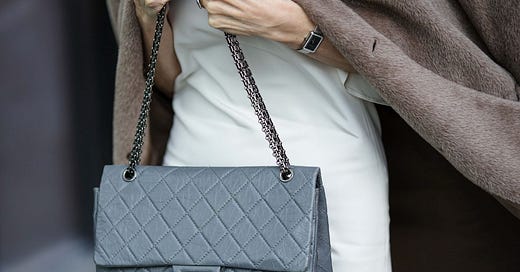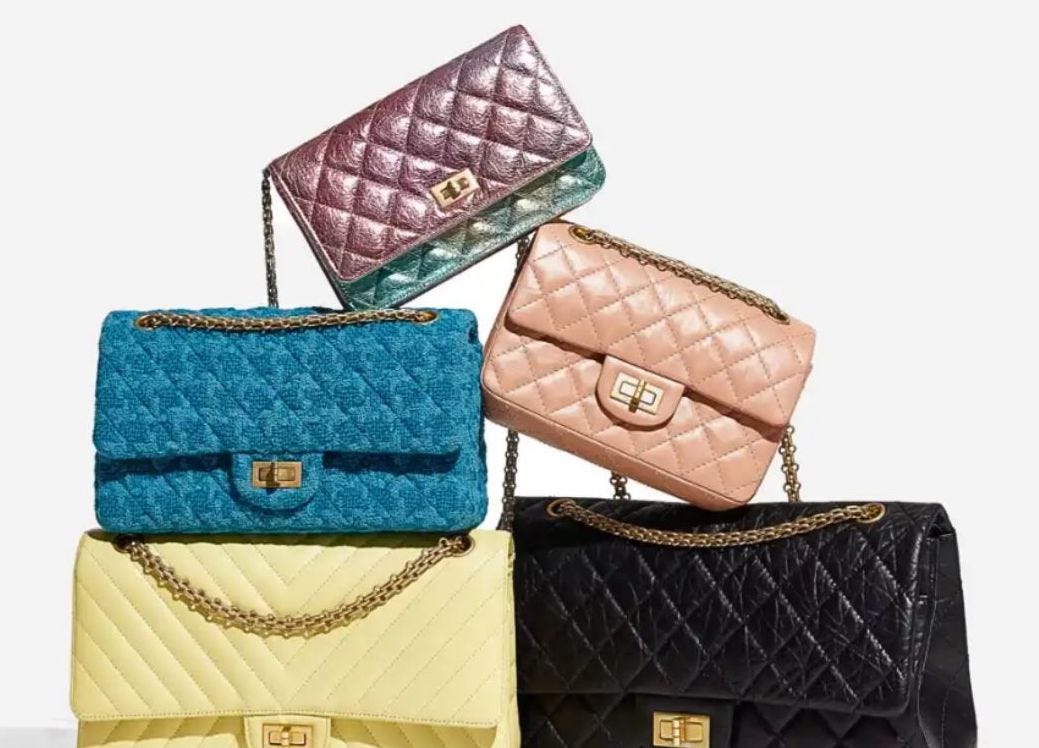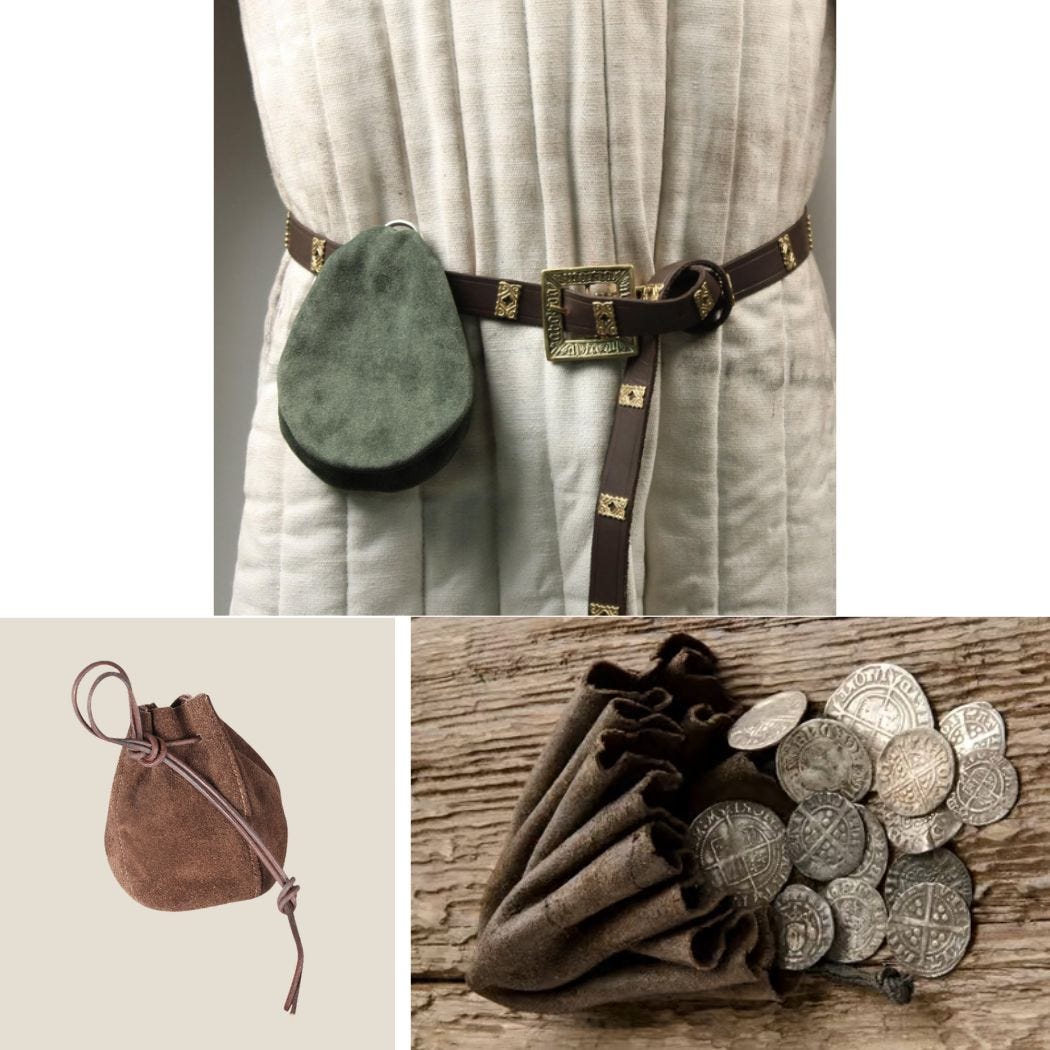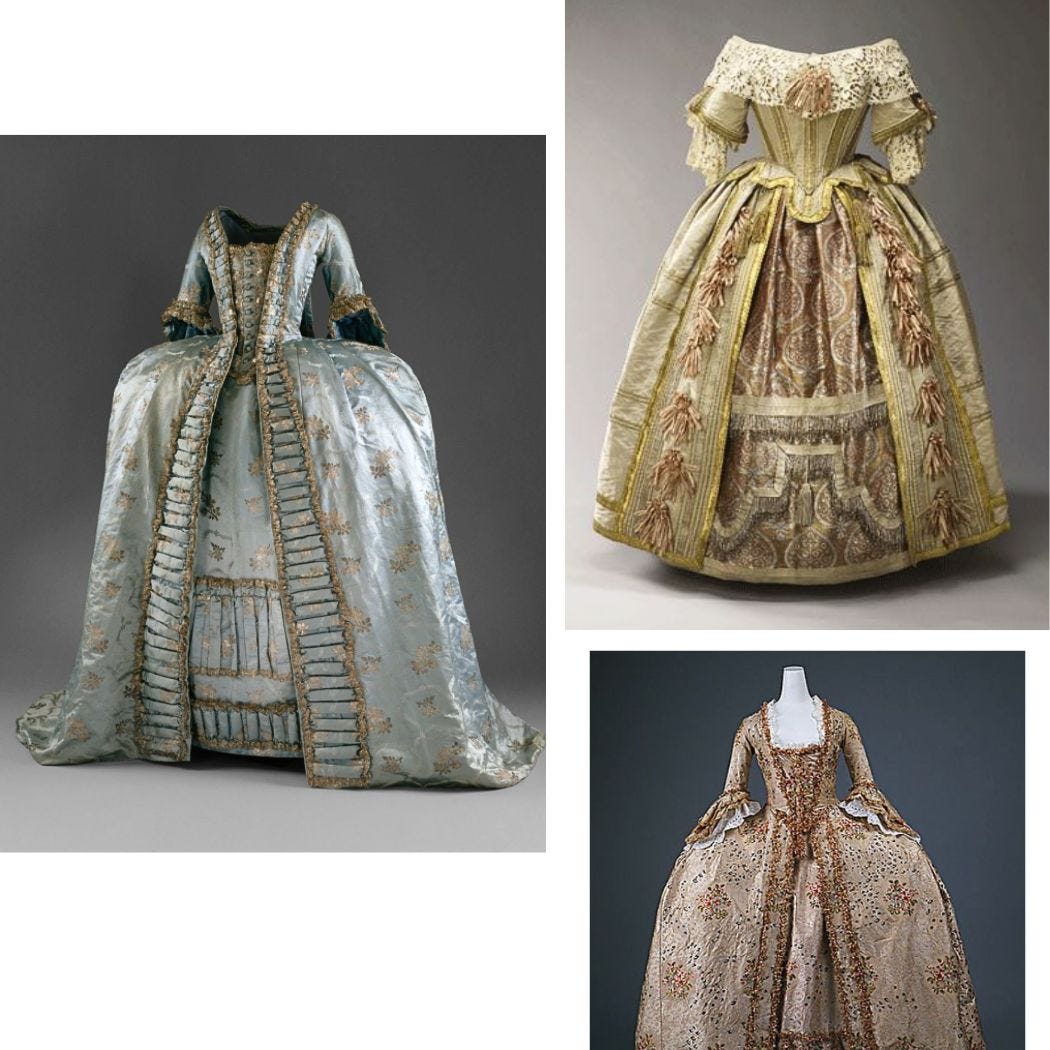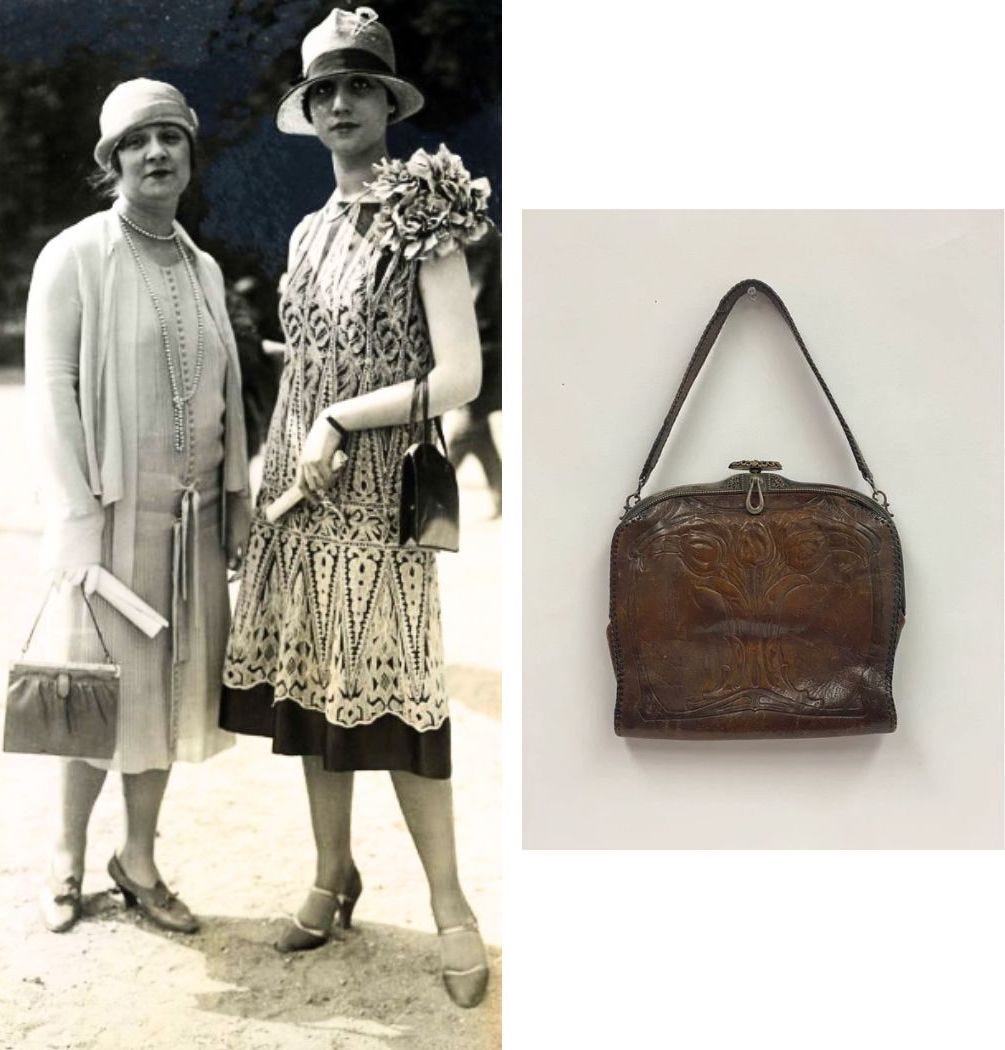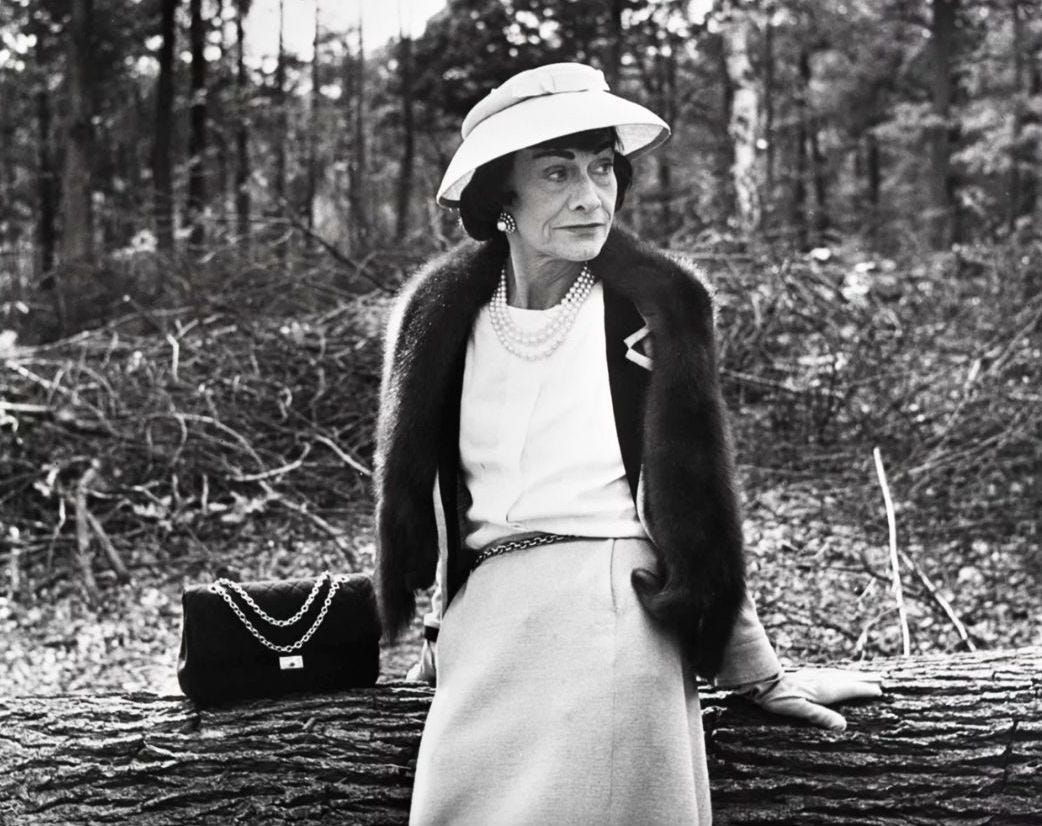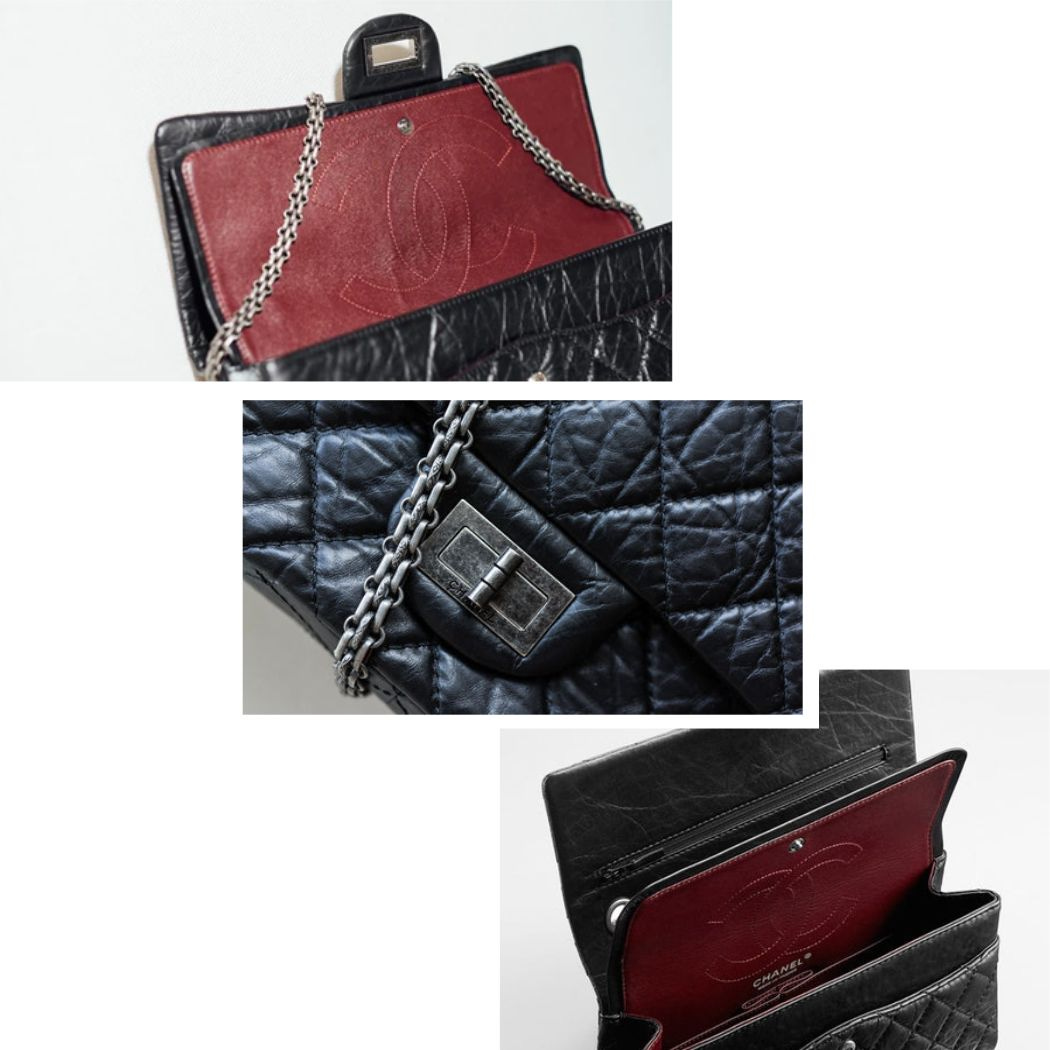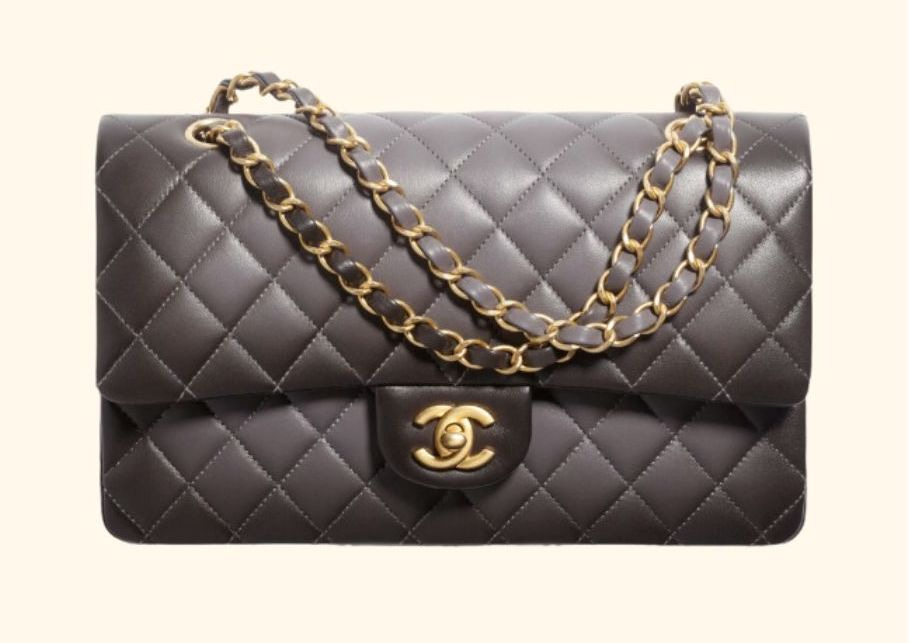SS-25: Chanel 2.55: A Revolutionary Bag
Few items in the world of fashion have achieved the iconic status of the Chanel 2.55 bag. Since its debut in Feb. 1955, the 2.55 has remained a symbol of innovation, sophistication, & timeless style.
This article delves into the history and innovation behind this legendary accessory and celebrates its lasting impact on the fashion industry.
The Innovator: Coco Chanel
Coco Chanel was a visionary who revolutionized women's fashion by prioritizing comfort and practicality without compromising style.
Frustrated by the impracticality of handbags of her time, which were often handheld and cumbersome, Chanel sought to create a bag that would free women's hands.
The result was the 2.55 bag, a groundbreaking design that combined functionality with high fashion.
A Brief History of Women’s Purses
Before there were totes, clutches, or pocketbooks, humans carried pouches, usually made of animal skin. By the Greek and Roman periods, the size of a person’s pouch signified their place in society.
Purses also held symbolic meaning. The Roman goddess of fertility, Uberitas, is depicted carrying a purse full of seeds. During Roman wedding rituals, a purse filled with seeds and coins was gifted, suggesting the bride's fertility and value, symbolically tied to her ability to reproduce.
The smaller the pouch, for both women and men, the higher the status—carrying only a few items in a tiny purse indicated that someone of lower rank handled the heavier tasks.
Consider this the next time you see a celebrity carrying just their cell phone! ;-)
By the seventeenth century in the Western world, while large pockets were sewn into men’s clothes, women’s pockets were smaller, tied around the waist, and concealed under their skirts. Her most closely held possessions are accessed by reaching through yards of fabric, entry gained only by finding the opening in the skirt to locate the opening in the separate pocket.
By the eighteenth century, women’s fashion evolved with the European revival of Greek and Roman classicism. Middle-class women wore diaphanous muslin shifts that followed their curves closely, often exposing the outline of the contents of their pockets.
This led to the creation of the reticule—a small, decorative bag carried outside the clothing. Made from satin and heavily embellished, reticules were considered scandalous, akin to showing one's undergarments in public.
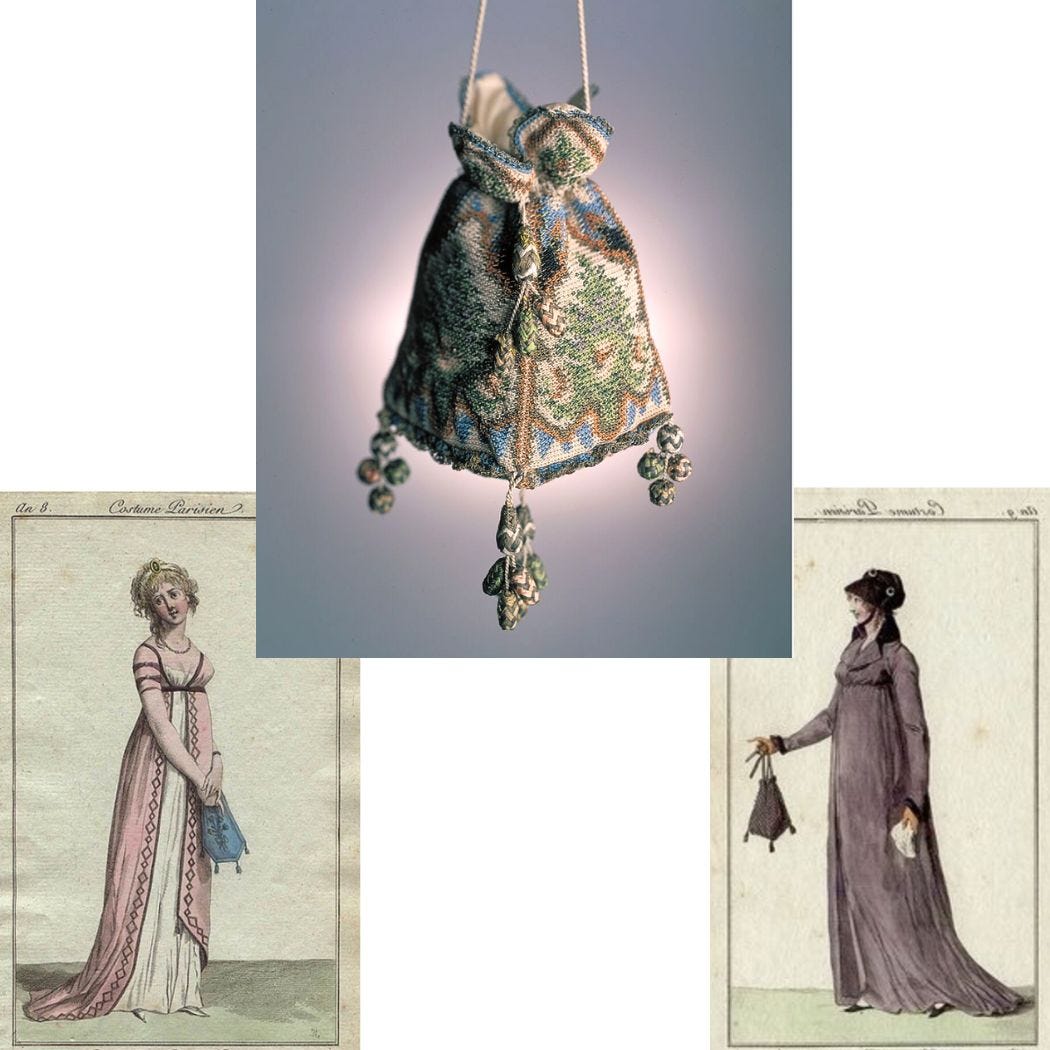
The reticule allowed women to carry personal items like rouge, powder, calling cards, and tiny fans. However, these bags rarely contained money, reflecting women's lack of financial autonomy at the time.
The handbag, as we know it today, emerged in the early 20th century. Made from leather and structured around a frame with a handle, its rise coincided with women’s fight for rights, including the right to vote and financial autonomy.
The handbag provided women a secure way to carry their belongings, reflecting their newfound purchasing power and independence. This bag, however, was carried in your hands or by your elbows.
History & Evolution of Chanel 2.55
Coco Chanel presented a bag that would forever define the house of Chanel, even sans logo! The 2.55 bag was introduced to the world in February 1955, hence the name. Traditionally, women’s bags were designed to be carried by a top handle or as a clutch.
Chanel’s addition of a shoulder strap (inspired by those found on soldiers’ bags) was both defiant and practical. It left the wearer hands-free and able to move without restriction—or simply able to put their hands in their pockets, as the designer liked to do.
This revolutionary concept changed the way handbags were perceived and used.
Design Elements
Chanel drew inspiration from her experiences, incorporating elements from military satchels and her convent upbringing into the design.
Practically every element represented some facet of Gabrielle Chanel’s life.
The exterior was quilted wool, inspired by the saddle blankets at the horse races Gabrielle frequented. The designer had loved horse riding and racing ever since she was introduced to it in the 1910s by Étienne Balsan, a wealthy textile heir and equestrian enthusiast.
The bag was rectangular in shape and made of soft lambskin leather, a material previously reserved for making gloves. Now, the bags come in a variety of leathers. The interiors are a burgundy color, allegedly the same shade as Gabrielle's uniforms in the convent.
The chains on which the nuns’ keys jangled were another point of reference, inspiring the ingenious chain strap that converted a shoulder bag into a crossbody.)
It was fastened via a discreet turn-lock closure and christened the ‘Mademoiselle’ in honor of Chanel’s unmarried status. Some also speculate that Chanel's diamond-shaped stitching was a nod to the stained-glass windows of the convent of Aubazine’s orphanage (where she spent her early years.)
Most notably, the 2.55 had a secret pocket hidden inside the front flap, reportedly designed for the discreet storage of love letters.
Certainly, Chanel was never short of lovers (and, one assumes, love letters) and is reported to have enjoyed romances with the composer Igor Stravinsky, artist Salvador Dalí, Grand Duke Dmitri Pavlovich of Russia (with whom she created Chanel No. 5), and Arthur ‘Boy’ Capel.
Modern Reinterpretations
The Classic Flap, a.k.a 11.12, was introduced in 1983 by Karl Lagerfeld as a tribute to the original. By the way, the number doesn’t reflect that it was created in November 2012, but rather the bag’s style code A01112.
Following Gabrielle’s death in 1971 and a lull in the brand’s influence, Karl Lagerfeld claimed the reins of the fashion house in 1983; in an attempt to rekindle its old spark, he introduced his take on the 2.55.
Minor interventions were made to the bag. In contrast to the 2.55’s nearly logo-less Mademoiselle turn-lock and all-metal chain, the Classic Flap fastens via a CC closure, and its chain strap is interlaced with leather.
It comes in six sizes, offering slightly more variety than the 2.55 and different finished leather. Calf leather and pebbled calf leather (dubbed “caviar”) are among the most popular.
Her Legacy
Over the decades, the Chanel 2.55 bag has been embraced by high society, countless celebrities, and fashion icons, cementing its status as a symbol of luxury and sophistication.
This bag has become a staple in the world of high fashion. Its timeless appeal and association with elegance have made it a coveted item across generations.
Now that you know more about the history of the purse and its connotations, you can understand that the Chanel 2.55 bag is more than just an accessory; it is a piece of fashion history.
Its innovative design, cultural significance, and timeless appeal have made it a true icon.
Whether you are a long-time admirer or a new enthusiast, the Chanel 2.55 bag remains a testament to the power of innovation and the timeless elegance of true style.


